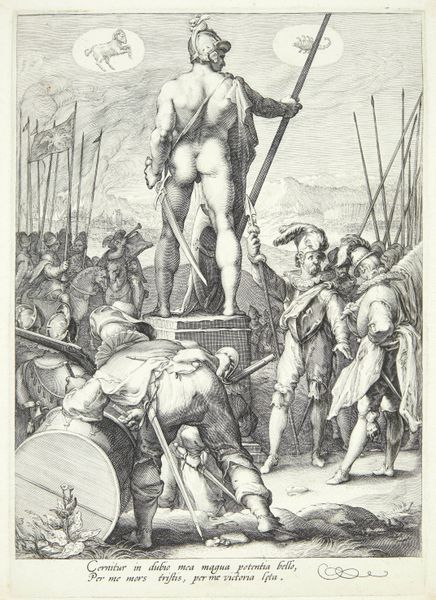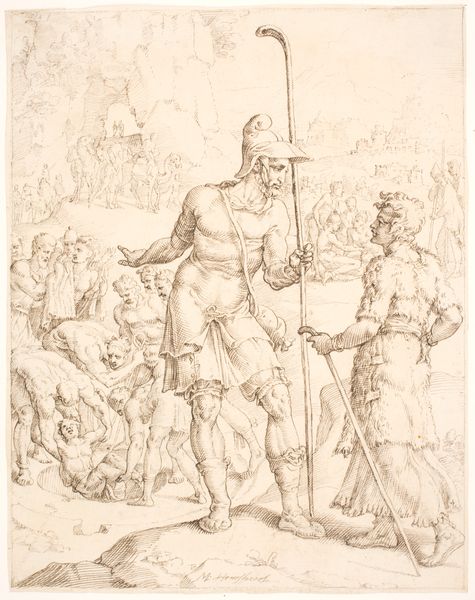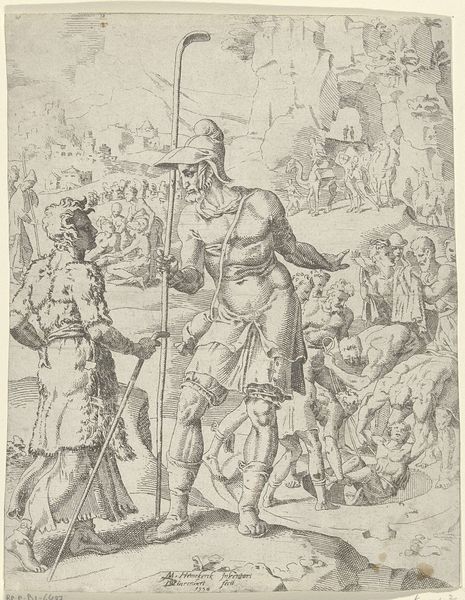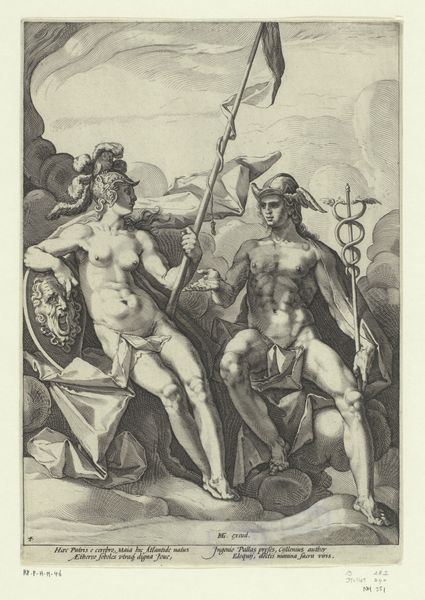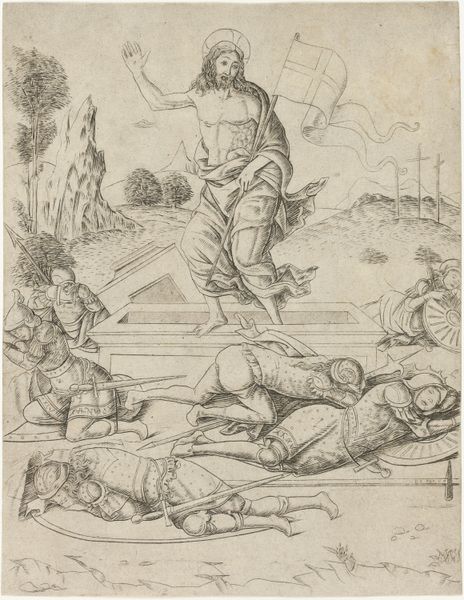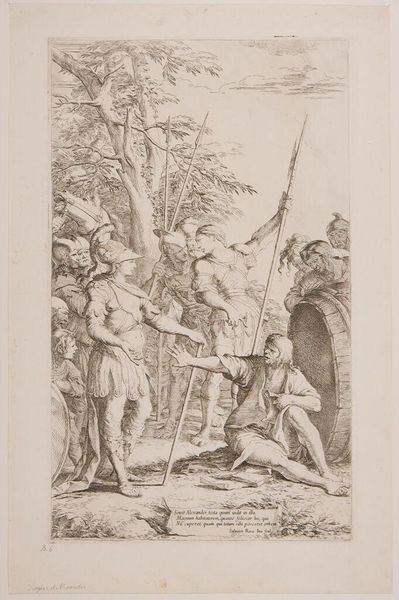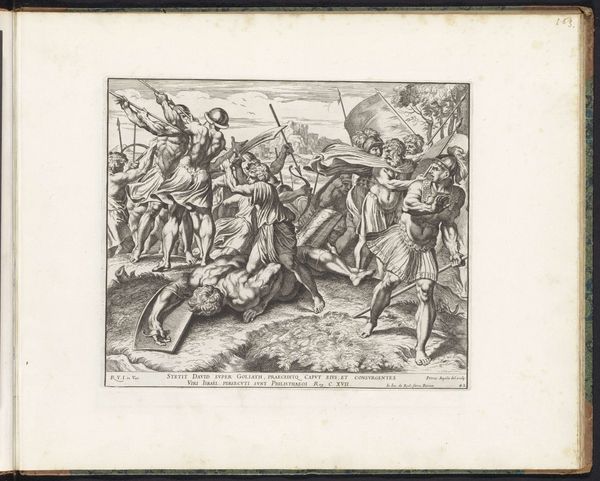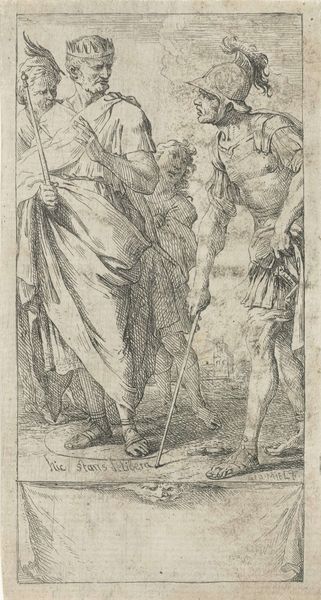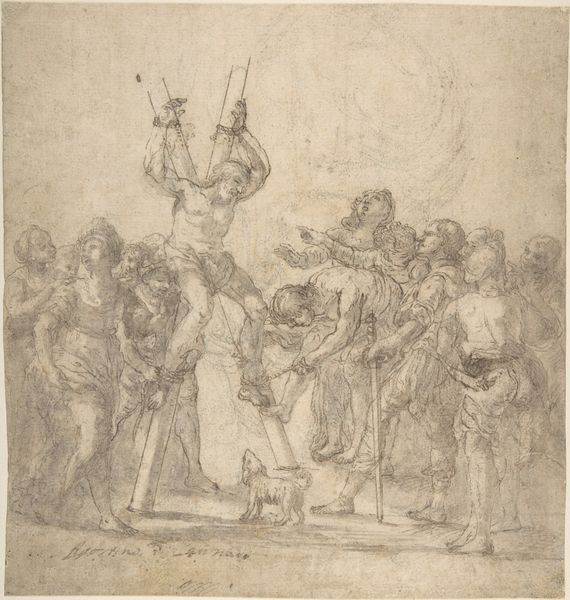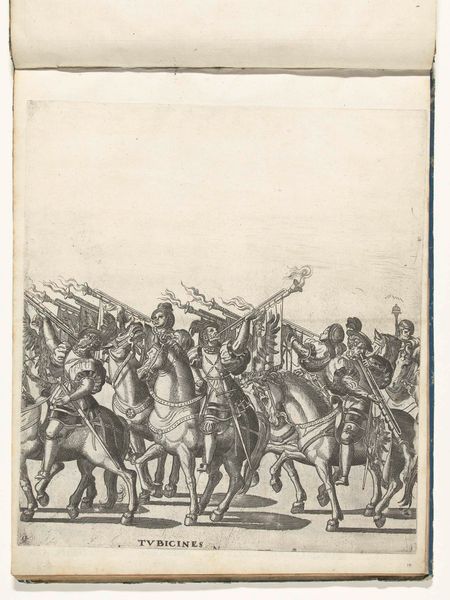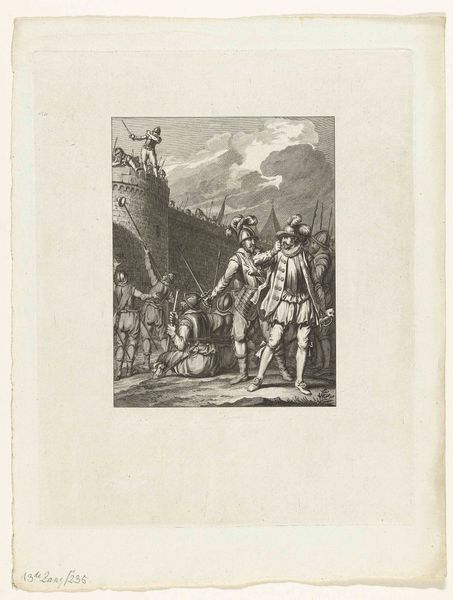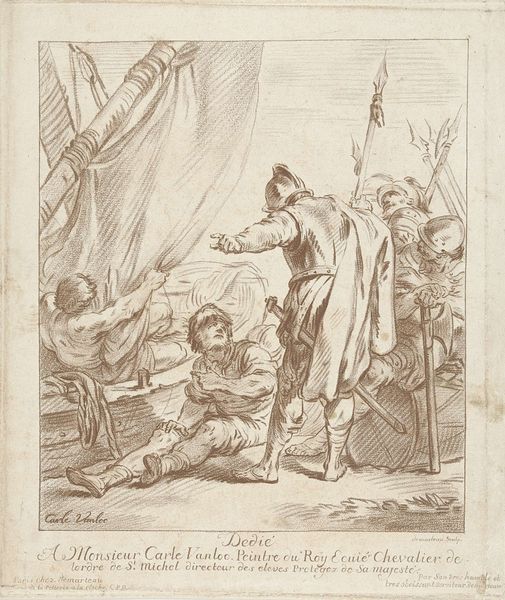
drawing, paper, ink, graphite
#
portrait
#
drawing
#
baroque
#
figuration
#
paper
#
ink
#
coloured pencil
#
graphite
#
history-painting
Dimensions: height 243 mm, width 360 mm
Copyright: Rijks Museum: Open Domain
Editor: This drawing by Moses ter Borch, “Mars, God van de Oorlogskunsten” from 1660, shows Mars as this nude statue looming over soldiers. There’s something very stark and maybe even vulnerable about presenting a war god in this way. What’s your interpretation? Curator: The depiction of Mars is indeed striking. In considering this work, it is vital to remember the cultural moment it emerged from. Seventeenth-century Dutch society, though thriving economically, was wrestling with its identity post-religious reformation and during almost constant war. Here, Mars as an idealised, yet vulnerable male figure reflects both power and fragility. Notice also the uniformity of the soldiers versus the individualism inherent in the artistic representation of the god. What might this tension suggest about perceptions of militarism? Editor: That’s a good point! It almost feels like Ter Borch is critiquing the rigid structure of the military. It also brings up questions of the male body, this classical ideal versus the reality of war. Curator: Exactly! Think about how gender and power intersect here. Ter Borch uses this classical figure, traditionally a symbol of virility and strength, in a drawing meant to question the realities of military violence and social regimentation. It invites us to reconsider those relationships. Consider also, the very materiality. Why render this image as a drawing, rather than a painting? Editor: That’s a great question. Maybe because a drawing feels more immediate and intimate, suggesting a critique of current affairs more so than this grand symbolic narrative of war? Curator: Precisely! It's an interesting insight into art’s capability to be both aesthetic and critical simultaneously. What can you observe about its location? Knowing it is held at the Rijksmuseum. Editor: It’s powerful how analyzing the social and historical context really opened up a different reading of the work for me! Curator: Indeed, by acknowledging context we reveal the potent activism of art to question the status quo.
Comments
No comments
Be the first to comment and join the conversation on the ultimate creative platform.
